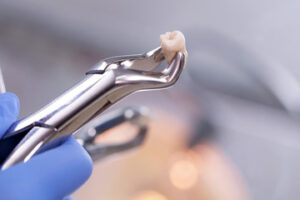How to Prepare for a Tooth Extraction
Before the procedure begins, we will administer local anesthesia to numb the area. You may also receive sedation anesthesia, depending on your needs.
If the tooth is severely damaged or infected, the dentist may need to cut away gum tissue and remove a portion of the tooth. This is called surgical tooth extraction. Click https://bocadentallasvegas.com/ to learn more.

There are several steps that a person can take to prepare for a tooth extraction procedure. These steps help ensure that the surgery succeeds and minimizes recovery time. For instance, patients are advised to eat soft foods such as soup and pudding that don’t require much chewing. They are also encouraged to rinse their mouth with warm water and antimicrobial mouthwash twice daily and use over-the-counter pain relief medication.
Sometimes, an oral surgeon may recommend using a dental dam to keep the area clean and prevent any complications from developing. This is especially true in cases involving a wisdom tooth impacted or partially erupted.
An oral surgeon will review a patient’s medical history before treatment. This helps to determine whether a person is at risk for complications such as anesthesia or anesthesia-related side effects and can help avoid potential issues such as preexisting conditions and drug allergies.
A patient needs to arrange for transportation to and from the surgery appointment. This is particularly crucial if they plan on receiving sedation to assist with relaxation during the procedure. Patients are also advised to dress comfortably on the appointment day and to remove jewelry, contact lenses, or dark lipstick. They should also pull their hair back, as this is most comfortable.
A person should also make arrangements to stay home after the procedure. This is because the anesthesia will render them unable to drive, and it’s best to have a family member or friend available to provide a ride. It’s also a good idea to make arrangements for someone to care for kids or pets so that the patient can focus on recovery.
After the surgery, a blood clot will usually form in the tooth’s socket. A person must change the gauze to soak up bleeding and refrain from smoking or using straws, which can dislodge the clot and cause a dry socket. It’s also a good idea to only brush the site of the tooth’s removal once told by the oral surgeon it’s safe to do so.
Before the procedure begins, a local anesthetic is used to numb the tooth, jaw bone, and surrounding gums. It is injected directly into the site and can be short-acting or long-acting, depending on the patient’s age, health condition, and the duration of the surgery. Sedation or general anesthesia may also be provided.
When the tooth is removed, it’s normal for there to be some bleeding or oozing from the socket. This is because dental instruments have nicked the blood vessels in and around the area. Biting down on a piece of gauze for 20 minutes is recommended to help stem the flow and induce a blood clot in the socket (hemostasis).
The dentist will enlarge the tooth’s tooth socket by loosening and stretching it with tools before rocking the tooth back and forth to loosen it up enough to remove. Patients unable to sit still for this period may experience discomfort, which can be minimized using an over-the-counter pain reliever like ibuprofen.
While rare, some patients can develop an allergic reaction to the anesthesia used during a tooth extraction. This can result in a rash, tongue, lips, mouth, or throat swelling, or difficulty breathing. If you have a preexisting allergy or condition, you should let your dental care team know before treatment to avoid complications.
Bruising after a tooth extraction is also common and can be more noticeable with surgical extractions than simple ones. It usually resolves several days after the operation. Still, patients must be warned about the risks and given clear safety net instructions for the post-operative period to ensure they seek immediate medical attention if a complication occurs.
Other possible risks include:
- Infection at the tooth socket can cause pain, swelling, and fever.
- A hematoma is a collection of blood under the skin.
- Cardiovascular effects from the anesthesia, including changes in heart rate and rhythm.
Those with heart conditions should consult with their doctor before undergoing an extraction. Also, it’s a good idea to stop taking any blood thinners or aspirin products a week before the extraction.
Before a tooth extraction, the patient should be sure to take any medications as directed. Failure to do so could cause discomfort during the procedure and hinder the healing process afterward. These medications may include antibiotics or painkillers. During the consultation, a dentist can determine whether the patient requires anesthesia to make the procedure safe and comfortable.
Before the procedure begins, a person will be given an injection of local anesthetic close to the tooth site. This will numb the area so they will not feel any pain during and after the operation. This numbness will last for a few hours after the surgery.
After numbness, the dentist will begin by enlarging the socket and loosening the tooth. They will then rock the tooth back and forth until there is enough to pull it out. During this time, the patient should be careful not to bite down on the empty socket, which can cause more bleeding and pain.
The person will then be asked to bite down on a piece of gauze for at least 30 to 45 minutes after the surgery. This will help stop the bleeding and encourage clotting. After the clot forms, the person should not rinse vigorously, suck on straws, or smoke, as this can dislodge the clot. Instead, they should drink plenty of water and use a mouthwash that contains salt to clean the rest of their teeth.
A well-balanced diet is also important to aid the recovery process after a tooth extraction. Nutrient-rich foods can reduce inflammation and promote faster healing. A balanced diet should also include lots of water to keep the body hydrated.
The dental team can help ease anxiety about a tooth extraction by talking to the patient and offering relaxation techniques and sedation options. They can also explain what will happen during the procedure to help the patient prepare mentally and physically. In addition, patients can ask any questions they have about the procedure to feel confident and prepared when the day comes.
Swelling tends to peak around 24 hours after a tooth extraction, and patients should take this time to get plenty of rest. This is the best way to help speed up recovery from the procedure. Getting plenty of sleep will also help reduce pain from a tooth extraction. In addition, ice packs applied externally to the face can help reduce swelling and discomfort after a tooth extraction.
A few days following the procedure, patients should slowly reintroduce soft foods to the diet. They should avoid foods with a hard texture, as they could become trapped in the empty socket and cause pain or infection. Eating nutritious, well-balanced meals that contain plenty of vitamins and minerals is important to promote healing from within the body.
Patients should rinse their mouths gently with a saline solution or salt water throughout the healing process to keep the site clean and prevent bacteria from growing in the empty tooth socket. They should also brush their teeth but be careful not to touch the extraction site.
It is also important to avoid smoking and limit alcohol consumption, as these can delay healing and cause pain. Lastly, it is important to not drink through a straw or suck on candy or lollipops, as these activities can dislodge the blood clot that forms in the extraction site.
If a patient received oral or IV sedation during their tooth extraction, they would need to arrange for someone to drive them home. This is because this type of sedation can make the patient very drowsy.
It is also important to contact the dentist if the pain or bleeding persists after a few days, as this may indicate that the wound is not healing properly. In such cases, a dental surgeon can review the recovery process and determine whether additional treatment is required. In most cases, the pain should subside after two weeks. However, a patient is recommended to visit the dentist again for a post-extraction checkup to ensure that the healing process is progressing normally.

